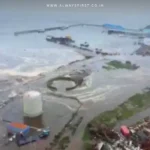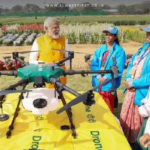
Scorching Heat Redefines Kashmir’s Climate
Kashmir, once a serene summer haven, is enduring an unprecedented heatwave that has shattered temperature records. Srinagar recorded highs of nearly 35.5°C, marking the hottest June day in two decades, with minimums climbing to record levels as well. The Valley’s usual mid‑20s range has been replaced by a relentless summer environment, exposing a region unprepared for such extremes.
Blazing Sunlight Sparks Buying Boom
Amid this heat, Kashmiri homes are transforming. Air cooler sales, long overshadowed by air conditioners, have surged, with dealers reporting demand spiking since May. Priced under ₹10,000 and highly efficient on inverter power, coolers have become the go-to solution for both urban and rural households. Though AC demand is also rising, coolers are now viewed as the cost-effective frontline defence against the heat.
Power Crunch Adds to the Heat Stress
The timing couldn’t be worse. Power demand across Jammu and Kashmir has exceeded 3,000 MW, while actual supply lags by 200-250 MW, forcing frequent outages. Srinagar residents report erratic blackouts and voltage dips exactly when relief is most needed. Smart meters had promised better supply, but the reality has been inconsistent at best.
Coolers vs ACs: Economics and Efficiency
Amidst rising electricity tariffs and persistent outages, air coolers have become more appealing. Their ability to run on inverters during power cuts and their lower consumption make them ideal. Conversely, air conditioners, though more effective, are expensive and power-intensive. Dealers are scrambling: AC inventories are drying up for the first time, while cooler stocks are flying off shelves.
Adaptation by Necessity and Innovation
Kashmiris are adapting swiftly. With unstable power grids, many households are equipping themselves with inverters to power coolers during load‑shedding. Community centres offer water and shelter during peak heat hours. Meanwhile, local authorities are deploying tankers and issuing public advisories, though long-term infrastructure improvements remain urgent.
Climate Signals Grow Louder
Experts link this climate shift to several factors, global warming, rapid urban growth, deforestation, and environmental degradation. Studies over decades confirm Kashmir is warming steadily: maximum temperatures have risen nearly 2°C since the 1980s, with minimums climbing too. The region’s glacial retreat, shrinking lakes, and dry spell frequency are clear warning signs.
Ripple Effects Across Sectors
The implications stretch far beyond discomfort. Agriculture, especially apples, saffron, and paddy, is reeling under heat and erratic rainfall. Hydropower generation suffers as melting glaciers alter water cycles, compounding the power crisis. Tourism, once the Valley’s hallmark, also faces decline as heat threatens its reputation as a summer escape.
Community Coping and Call to Action
Local initiatives are helping: mosques and schools operate as cooling zones, volunteers distribute hydration kits, and residents share outage updates via messaging apps. Still, these stopgap measures underscore the need for systemic solutions, investment in energy resilience, green infrastructure, and community awareness.
Looking Ahead: Cooling with Climate Awareness
As temperatures climb, Kashmir is rethinking its thermal comfort strategy. Air coolers symbolize more than relief, they reflect resilience, economic choice, and ecological adaptability. But without broader climate mitigation, urban greening, power system upgrades, and sustainable planning, these efforts remain fragile.
Heatwave’s True Cost to Kashmir
This summer heatwave represents more than a meteorological blip, it’s a climate crossroads. Shifts in living patterns, including cooler adoption, and economic strain signal urgent need for climate-responsive policies. As Kashmir battles rising heat and power deficits, the cooler revolution offers hope, but it’s only step one in safeguarding a region under environmental siege.
In this transformative moment, Kashmir stands at a climatic inflection point. Cooling solutions offer immediate comfort, but long-term resilience demands structural change. How the region adapts now will shape life in the Valley for decades to come.









































Leave a Reply